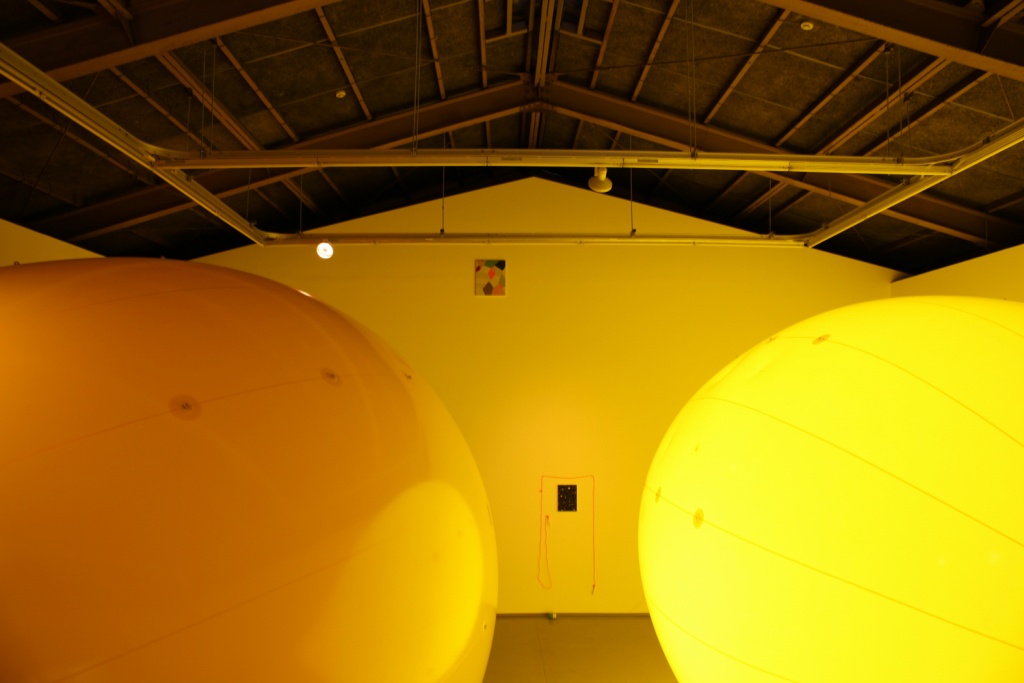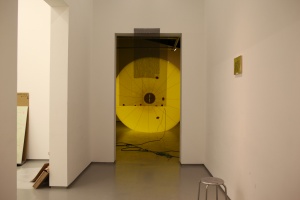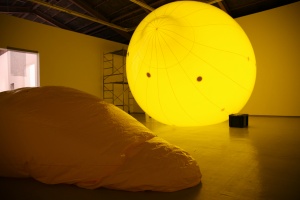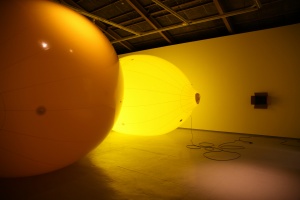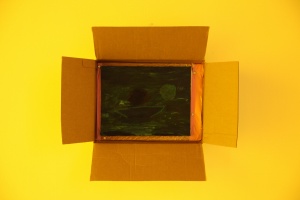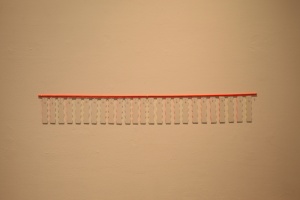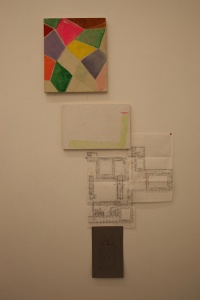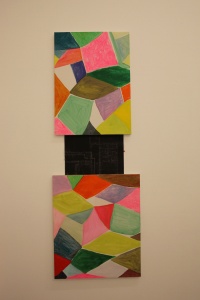Introduction:
Sugito had finished painting the ground on a number of large canvases in his studio. Some were completely covered with light pastel colors, and some were painted with a grid reminiscent of textile patterns. “When I begin moving my brush, I feel like I am leaving everything behind and walking into the forest all alone. When I do this, I end up seeking words and meanings that take power from the forest, and then I manage to slowly disappear from the place.” (Hiroshi Sugito, press release, Marc Foxx 1996). Recalling this statement, it seems that the trees in the forest of these canvases are waiting quietly for the artist to breathe life into them.
Sugito majored in Japanese-style painting and he often uses traditional mineral pigment as a medium, but his paintings carry on the major theme of modern Western-style painting, how to make a planar surface come alive. The rectangular pictorial surface sometimes turns into butterflies and sometimes mountains. The painted areas changed into luxuriant foliage or clouds. The empty margins deliberately left in the ground suggest something definite but not painted to the eyes of the viewer – air, water, overflowing light, or a transparent curtain suddenly appearing in the forest. These paintings, which move back and forth in the interval between representation and abstraction, are hallucinatory, creating illusions that unsettle our ordinary sensations of our own bodies. Sugito may be searching for clues to open up the unknown possibilities of the flat medium of painting explored by painters of the past, methods like the divisions in Mondrian’s paintings, the motifs blending into the decoration in Matisse, and the rhythm of line and color in Abstract Expressionism. In recent years, his work is moving toward three dimensions in wooden panel pictures with bases and the cast-iron reliefs.
Concept:
This exhibition is being held as a precursor to “leaves and fields(cob web and spider) – Jun Aoki and Hiroshi Sugito,” an exhibition commemorating the fifth anniversary of the Aomori Museum of Art which will begin on April 23. For both Sugito and Aoki, their works, whether art or architecture, are test pieces that are never finished. When the work leaves their hand it is not considered complete. It is always left to be changed little by little by the user or the viewer. In this exhibition the gallery is transformed into a “studying field” thinking of how and where spiders spread out there cobwebs. We hope that you will take the opportunity to see this show. It is guaranteed to be surprising and fun.

